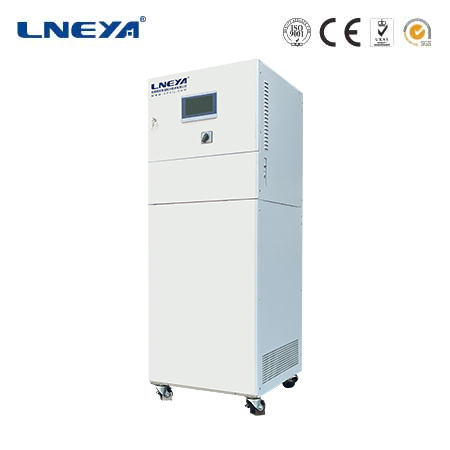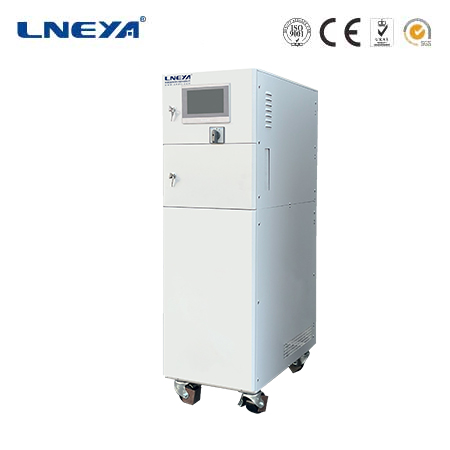cool & heat
The Science and Applications of Cooling and Heating
Introduction
Cooling and heating are fundamental processes that impact our lives in numerous ways. From creating a cozy living environment to enabling complex industrial operations, they are omnipresent. In the context of indoor spaces, maintaining an appropriate temperature is crucial for human well – being, enhancing productivity, and safeguarding health. In industrial settings, accurate temperature regulation is essential for manufacturing processes, storage of perishable goods, and the proper functioning of machinery.

The Science of Cooling
The Refrigeration Cycle
The refrigeration cycle is the cornerstone of most cooling systems. It involves a refrigerant, a substance that readily transitions between liquid and gaseous states. This cycle typically comprises four key components: the compressor, condenser, expansion valve, and evaporator.
Compression Stage: The cycle commences with the refrigerant as a low – pressure gas in the compressor. The compressor then compresses the refrigerant, raising its pressure and temperature. As mechanical work is done on the gas, its internal energy increases, causing it to become a high – pressure, high – temperature gas.
Condensation Process: The high – pressure, hot refrigerant gas then enters the condenser. Here, heat is transferred from the refrigerant to the surrounding environment. This heat transfer causes the refrigerant to condense into a high – pressure liquid. For instance, in an air – conditioning system, the condenser, often located outside the building, dissipates heat to the outdoor air, transforming the refrigerant from a gas to a liquid.
Expansion Phase: The high – pressure liquid refrigerant passes through an expansion valve, which drastically reduces its pressure. As the refrigerant expands rapidly, it experiences a significant drop in temperature, becoming a low – pressure, cold liquid – vapor mixture.
Evaporation Stage: The low – pressure, cold refrigerant enters the evaporator. In the evaporator, the refrigerant absorbs heat from the surrounding air or fluid. This heat absorption causes the refrigerant to evaporate back into a gas. In a room air – conditioner, the evaporator, located indoors, cools the room air as the refrigerant evaporates.
Evaporative Cooling
Evaporative cooling is an alternative cooling method, particularly effective in arid climates. It operates on the principle that when water evaporates, it absorbs heat from its surroundings. An evaporative cooler, also known as a swamp cooler, uses a fan to draw hot, dry air through a wet pad. As the air passes over the wet pad, the water on the pad evaporates, extracting heat from the air. The cooled air is then circulated into the space. This method is more energy – efficient than traditional refrigeration – based cooling in low – humidity areas as it consumes less electricity.
The Science of Heating
Combustion – Based Heating
Combustion heating is one of the oldest and most common heating methods. In this process, a fuel such as natural gas, oil, or wood is burned. When the fuel undergoes combustion, it reacts with oxygen in the air, releasing a substantial amount of heat. For example, in a gas furnace, natural gas is burned in a combustion chamber. The heat generated is then transferred to air or water (in the case of a boiler) through a heat exchanger. The heated air or water is distributed throughout the building via ducts or pipes to provide warmth.

Electric Resistance Heating
Electric resistance heating is based on Joule’s law. When an electric current passes through a resistor, heat is generated. In an electric heater, a wire or heating element with high electrical resistance is used. As electricity flows through this element, the resistance causes the element to heat up. Electric baseboard heaters and portable electric heaters are common examples of electric resistance heating devices. They are relatively simple to install and operate, but they can be more expensive to run, especially in regions with high electricity costs.
Heat Pump Heating
A heat pump is a versatile device that can both heat and cool. In heating mode, it transfers heat from a cold source, such as the outdoor air, ground, or water, to a warmer indoor space. Heat pumps operate by reversing the refrigeration cycle used in cooling. The evaporator absorbs heat from the cold source, and the condenser releases heat into the indoor environment. Heat pumps are more energy – efficient than electric resistance heating because they move heat rather than generate it from scratch. Ground – source heat pumps, which utilize the relatively stable temperature of the ground as a heat source, are particularly efficient and can offer significant energy savings.
Types of Cooling and Heating Equipment
Cooling Equipment
Air – Conditioning Systems
Split – System Air Conditioners: These are widely used in residential and small – commercial applications. A split – system air conditioner consists of an outdoor unit, which houses the compressor, condenser, and a fan, and an indoor unit, which contains the evaporator and a blower. The two units are connected by refrigerant lines and electrical wires. Split – system air conditioners are suitable for cooling individual rooms or small areas.
Central Air – Conditioning Systems: Central air – conditioners are employed in larger buildings, including multi – room houses, offices, and commercial complexes. They use a single outdoor unit to cool the entire building. The cooled air is distributed through a network of ducts to different rooms. Central air – conditioning systems offer uniform cooling throughout the building and can be controlled by a central thermostat.
Window Air – Conditioners: Window air – conditioners are self – contained units installed in a window opening. They are a cost – effective option for cooling a single room. The unit contains all the components of a refrigeration cycle (compressor, condenser, evaporator) in one compact package. While easy to install, window air – conditioners may not be as efficient as split – or central – system air conditioners.
Chilled Water Systems
Chilled water systems are commonly used in large commercial and industrial buildings. In these systems, a chiller cools water, which is then circulated through a network of pipes to air – handling units (AHUs) or fan – coil units (FCUs) in different areas of the building. The chilled water absorbs heat from the air in the building, and the cooled air is then distributed. Chilled water systems are more efficient for large – scale cooling applications and can be integrated with other building systems for better energy management.
Heating Equipment
Furnaces
Gas Furnaces: Gas furnaces are popular for heating in many parts of the world. They burn natural gas to produce heat. Gas furnaces are known for their high efficiency and rapid heating capabilities. They can be equipped with advanced features like variable – speed blowers and multi – stage burners to enhance energy efficiency and provide more precise temperature control.
Oil Furnaces: Oil furnaces burn fuel oil, such as heating oil, to generate heat. Although less common than gas furnaces in some regions, they are still used, especially in areas where natural gas is not readily available. Oil furnaces require regular maintenance, including oil tank refilling and filter replacement.
Electric Furnaces: Electric furnaces use electric resistance heating elements to produce heat. They are relatively simple in design and do not require a fuel supply other than electricity. However, as mentioned earlier, they can be more expensive to operate due to high electricity prices in some areas.
Boilers
Steam Boilers: Steam boilers heat water to produce steam, which is then distributed through pipes to radiators or other heating devices in the building. Steam boilers are often found in older buildings and some industrial applications. The steam releases heat as it condenses back into water, providing warmth to the space.

Hot Water Boilers: Hot water boilers heat water and circulate it through pipes to radiators, baseboard heaters, or in – floor heating systems. Hot water heating systems are more common in modern buildings as they offer more even heating and can be more energy – efficient compared to steam boilers. They can also be easily integrated with solar water heating systems for additional energy savings.
Applications of Cooling and Heating
Residential Applications
In homes, cooling and heating systems are essential for maintaining a comfortable indoor temperature throughout the year. During hot summer months, air – conditioning systems keep the interior cool, while in cold winter months, furnaces or boilers provide warmth. Some modern systems also assist with humidity control. For example, air – conditioners can dehumidify the air as they cool it, which is beneficial for comfort and can prevent the growth of mold and mildew.
Commercial Applications
In commercial buildings such as offices, stores, and restaurants, proper cooling and heating are vital for the comfort of employees and customers. Office buildings often use central air – conditioning and heating systems to ensure a pleasant working environment. Retail stores need to maintain a comfortable temperature to encourage customers to stay longer. Restaurants require precise temperature control not only for customer comfort but also for food storage and preparation. In data centers, cooling systems are crucial to prevent servers and other IT equipment from overheating, as even a slight increase in temperature can lead to system failures.
Industrial Applications
Many industrial processes demand strict temperature control. In the pharmaceutical manufacturing industry, for example, precise cooling and heating are necessary to ensure the quality and stability of drugs. Food and beverage industries use cooling systems for food storage, refrigeration, and freezing. In chemical plants, heating and cooling are used in chemical reactions, distillation processes, and to control the temperature of reactors. Industrial furnaces are used for processes such as metal smelting, forging, and heat – treating of metals.
Energy – Efficiency in Cooling and Heating
Energy – Efficient Equipment
When selecting cooling and heating systems, energy efficiency should be a key consideration. High – efficiency air – conditioners and furnaces are designed to consume less energy while delivering the same level of cooling or heating. For example, modern air – conditioners often have a high Seasonal Energy Efficiency Ratio (SEER), which indicates how efficiently the unit cools over a typical cooling season. High – efficiency furnaces may have an Annual Fuel Utilization Efficiency (AFUE) rating of over 90%, meaning they convert more than 90% of the fuel they burn into useful heat.
Insulation and Sealing
Good insulation and proper sealing of buildings can significantly reduce the load on cooling and heating systems. Insulating walls, roofs, and floors helps prevent heat transfer between the indoor and outdoor environments. Sealing air leaks around windows, doors, and ducts can also prevent conditioned air from escaping, reducing the amount of energy required to maintain the desired temperature.
Smart Thermostats and Zoning
Smart thermostats can learn the occupants’ temperature preferences and adjust the heating and cooling settings accordingly. They can also be controlled remotely via a smartphone or other devices, enabling better energy management. Zoning systems divide a building into different temperature zones, so that only the occupied areas are heated or cooled. This can result in significant energy savings, especially in large buildings.
Related recommendations
water cooled chiller maintenance
56Water Cooled Chiller Maintenance: Key Knowledge and PracticesWater cooled chillers play a vital role in various industrial and commercial applications by providing efficient cooling. To ensure the...
View details200kw chiller
75200kW Chiller A 200kW chiller refers to a refrigeration unit with a cooling capacity of 200 kilowatts. This type of chiller is commonly used in a variety of settings where a moderate to relativ...
View detailsrefrigeration unit ton
177Refrigeration Unit Ton: Understanding Cooling Capacity Measurements The "refrigeration unit ton," often abbreviated as RT, is a traditional unit of measurement for the cooling capacity of refri...
View detailswater chiller for injection molding machine
176Water Chiller for Injection Molding Machine: Enhancing Productivity and Efficiency Water chillers play a pivotal role in the injection molding industry, ensuring the precise temperature control...
View details
 LNEYA Thermal Test Chillers
LNEYA Thermal Test Chillers






HelloPlease log in